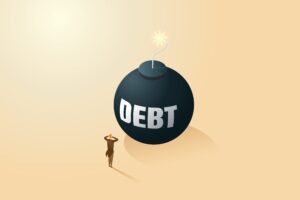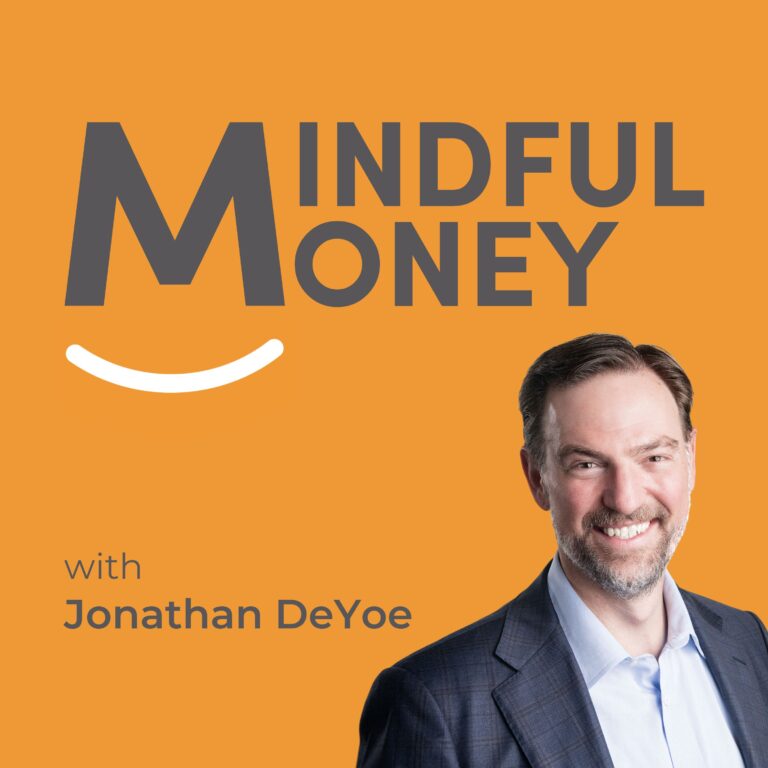This blog is the second of a 10-part series which covers everything you need to know to get started on your path to financial freedom:
1. The First Step in Any Financial Plan is NOT What You Think. We Start by Knowing What is Worth Seeking.
2. Developing Your Vision of a Perfect Life
3. Adopt a Savings Habit
4. Emergency Fund Basics
5. Eliminate High-Interest Debt
6. Saving and Investing for Retirement
7. Paying Down Low-Interest Debt and Building Taxable Savings
8. Simple, Basic, Mindful Investing
9. The Final Step – Portfolio Optimizers
10. The 10 Core Beliefs of Mindful Investors
Financial security is not a commodity; it can’t be found in a product. It isn’t available for sale in any way. Financial security is a journey. It is a path of trade-offs, acceptance, self-reflection, and hope. Getting there will require some effort and no small amount of luck.
Those who know where they are and where they are headed will have the best chance of closing the gap. They will, in a way, make their own luck.
Unfortunately, many people find themselves financially lost. They have a vague notion of wanting to get to a “better place.” But, they fail to acknowledge and accept where they are now, reflect on where they want to go, or determine the best path they should take to get there.
If you feel like that describes your situation, don’t worry. This is a process – culminating in an exercise – that will help you shine a light on your financial future by understanding what is important to you now.
The fact is you won’t get anywhere unless you understand where you are today and have a clear picture of what you want your life to look like tomorrow. In other words, you need to develop a vision of your ideal life.
Last week we started with Knowing What Is Worth Seeking – a vital pre-planning step. This week, we build on what we learned and we develop our ideal life vision as the first step of creating a written personal financial plan.
This is how you fully develop a picture of the future you’re working toward, and determine the specific financial goals you’ll need to achieve to get there.
Developing a vision isn’t fantasy –
it is NOT dreaming of a fairytale lifestyle. It isn’t for the special few who have been endowed with privilege and raised with wealth. It is for everyone. It means putting pen to paper and creating a written document that serves as a rudimentary life and finance map. Putting your intentions into writing gives you the impetus needed to start living the map.
Consider your vision as the guiding force behind your financial plan. With it, you’ll never have to feel like you’re at a loss. When you have a tough decision, you can compare the probable outcomes of different choices to the desired outcome in your Vision.
There are five essential elements to developing a vision. Although creating a financial plan has many more steps, I’m confident you will already feel better about your ability to control the future after just this exercise.
1. Identify Your Personal Values
Finding your starting point is about knowing and refining who you are. What, and who, matters most to you? What are your passions and desires? What in life makes you the most happy?
Your answers to these questions will formulate both where you are and where you want to go. Identifying what you truly value establishes the incentive you need to not only create a long-range plan but, most importantly, to live by it every day. Remember, the road to a better financial future is a marathon, not a sprint. Only the things that matter most to you can provide encouragement along the way.
Aligning your purpose and choices without your values will creates guardrails for your life that lead you in the right direction.
2. State Your Meaningful Purpose
After thinking inward, I want you think outward. That is, about your impression on the world. Consider your talents, your passions and the places that you find bring meaning to life. You are contributing something unique and valuable to the world – and your happiness depends on making the most of that human potential.
Your meaningful purpose is the definitive answer to the question “Why am I here?” For example, I am here to make a difference in my community. You don’t have to cure cancer or build a hospital with your name on it to make a meaningful contribution.
When you’re tempted to stray from your financial plan or have trouble making a life decision, this meaningful purpose will act as the beacon that guides you toward the right course of action. What choice best supports your meaning?
You will face dark times – no matter what choices you make and directions you choose. The only thing powerful enough to pull you through the darkest of those times will be a heartfelt Meaningful Purpose.
3. Picture Your Perfect Life
If you want to work toward a happier future, you must have a clear idea of what that looks like. What is the “set and setting” that will enable you to fulfill that meaningful purpose and experience the deepest joy in your life?
Think about what makes you the most happy, and construct a clear and detailed visualization of your perfect life.
By perfect, I do not mean a problem-free life where money for example is no issue – financial struggle is likely a part of everyone’s life. “I want to be a billionaire” doesn’t work as part of an honest picture that your heart can believe and pursue. Attainability should be a key component of the picture you paint of your perfect life. Otherwise, you would only set yourself up for failure.
Perfect, for the purposes of this exercise means a life that reflects your deepest desires and values. This picture-perfect life is not meant to be something you keep only in your head. Write it down and fully describe what your life would be and feel like with as much emotional clarity as possible.
Who will be there? What will you be doing day-to-day? What will your setting be like at home? At work?
As the focal point of your financial plan, it will provide the inspiration for sticking to that plan, day after day, for a lifetime.
4. Develop Your Professional Mission Statement
Because work is a significant part of our lives, your vision should also include a professional statement. This statement is meant to capture who you are in your professional life at this moment in time. However, “professional” is a relative term. If you’re a non-profit volunteer or stay-at-home parent, make that the essence of your statement.
The central pieces of information that a professional statement can convey include: Why you are in business (or doing what you do), Who you serve, What your clients need from you, and What your employers or employees or partners can reliably expect from you.
While your meaningful purpose describes the fundamental “why” of your existence, your professional mission statement captures your conscious intention for approaching the central activity of your daily life and holds you accountable to that intention.
5. Set Your Personal Goals and List Your Action Steps
The picture of your perfect life describes your ultimate destination, but what are the deliberate steps that will take you there?
That brings us to the last step of developing your vision, which is to set a series of goals and plan how you will achieve them. These goals will become the heart, soul and backbone of your financial plan.
You want to name your large life goals, specify the action steps that are needed to reach each goal, calculate what the goals will cost and set a completion date for every goal.
Probably the best way to approach this step is to start from the picture of your perfect life and work backward. In order to bring that picture to life, what are the various discrete goals you need to accomplish? For example, if owning a home is part of your picture, then “saving a down-payment” is one of your goals.
As you define your goals, break each one down into a series of smaller, corresponding action steps.
Not only must each goal be achievable, but it must also be compatible with all your other goals within the timeline you create. Undoubtedly, your idea of a perfect life will involve trade-offs, so keep revising your goals, action steps, costs and timeline until everything aligns.
Essentially, you are laying the road map of what matters most to you. With your vision clearly illustrated, you can concentrate on the things most critical to your happiness and give up the things that are not.
Turning Your Vision into Reality
Ultimately, your vision should be simple, clear and specific. It will also be dynamic and changeable, just like life. Instead of viewing the practice of developing your vision as a one-and-done exercise, I encourage you to update it as an annual financial check-up. We created our Values, Purpose, and Goals course to provide a template for this annual process.
This step alone is a leap toward a more secure, happier financial future. What comes next is to lay the steppingstones – adopting a saving habit, building an emergency fund, eliminating debt, investing for retirement and so on – that you need to traverse to make your vision your reality.






